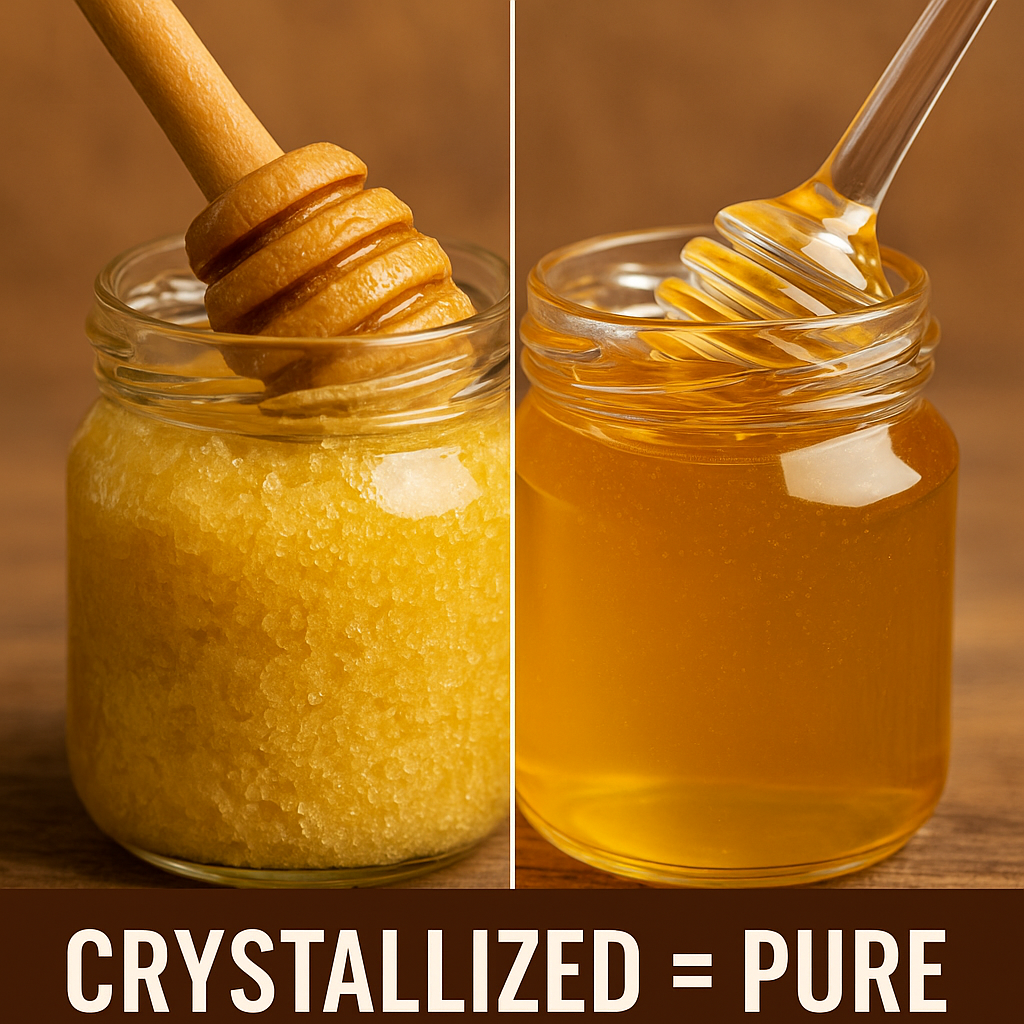Let’s understand crystallized honey first !
It’s shocking but true—over 90% of people wrongly believe that crystallized honey is spoiled, adulterated, or of poor quality. Some even reject it completely, assuming it contains added sugar or molasses.
Here’s the reality: crystallization is one of the strongest signs of pure, raw honey.
Let’s break down this common misconception and understand what actually causes honey to crystallize—and why it’s not something to fear, but to value.
_______________________________________________________________________________________________________
Why People Misjudge Crystallized Honey
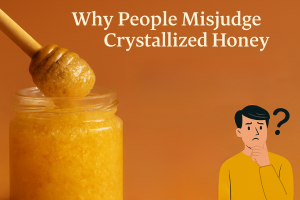
When most people see crystals forming in their honey, they immediately assume it’s either mixed with sugar, spoiled, or not genuine. Others believe real honey should always be liquid. These assumptions, however, are incorrect and stem from a lack of awareness.
Unfortunately, because big commercial honey brands never show honey in crystal form, consumers assume only liquid honey is pure. But in truth, most big-brand honey undergoes heavy processing, which is exactly why it doesn’t crystallize.
____________________________________________________________________________________________________________________________________________________________________________
What Causes Honey to Crystallize?
To understand this, we need to look at the natural composition of raw honey.
Honey contains two major natural sugars: fructose and glucose. Fructose dissolves easily in water, while glucose is less soluble and tends to form crystals. Therefore, the glucose-to-fructose ratio determines how fast honey crystallizes.
If honey has more glucose, it crystallizes faster. When fructose is higher, it crystallizes more slowly. This ratio depends on the type of flower nectar collected by the bees. For instance, mustard and coriander honey crystallize quickly due to high glucose, whereas acacia and litchi honey take longer because of their higher fructose content.
So, crystallization is not a flaw. It’s a natural outcome and a clear sign that your honey is unprocessed and genuine.
____________________________________________________________________________________________________________________________________________________________________________
Understanding the Commercial vs. Natural Honey Difference
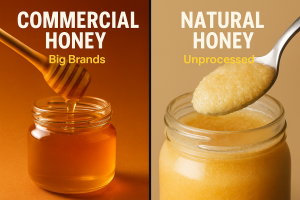
Big-brand honey often remains liquid for years—even in cold temperatures. That’s because it’s been heavily heated and ultrafiltered, stripping it of pollen, enzymes, yeast cells, and even flavor.
This processing kills the structure of natural sugars and prevents crystals from forming. Brands use this method to increase shelf life and ensure the honey looks smooth and uniform.
However, this process also removes much of the nutritional value, making the honey less beneficial to your health.
In contrast, local, unprocessed honey from ethical beekeepers retains all its natural elements. So, when the temperature drops below 10°C, the glucose naturally starts forming crystals.
Crystallization in raw honey signals that it hasn’t been subjected to high heat or ultrafiltration. It means the honey still contains pollen and other natural components. Some local brands even sell crystallized honey separately, as many people enjoy its thick, spreadable texture.
____________________________________________________________________________________________________________________________________________________________________________
How to Turn Crystallized Honey Back into Liquid
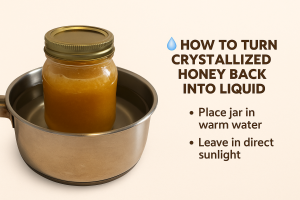
It’s simple and safe. Place your honey jar in warm (not boiling) water and let it slowly melt. Alternatively, leave it in direct sunlight for a few hours.
Avoid using a microwave, as it can destroy the honey’s beneficial properties.
____________________________________________________________________________________________________________________________________________________________________________
Conclusion: Crystallization = Pure Honey
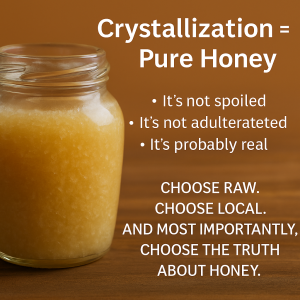
Crystallization is a natural process that occurs only in raw, unprocessed honey. Don’t let its appearance fool you. Even the honey found in ancient Egyptian pyramids was crystallized—and still edible after thousands of years.
So next time you see honey that’s grainy or thick, remember:
-
It’s not spoiled
-
It’s not adulterated
-
It’s probably real
Choose raw. Choose local. And most importantly, choose the truth about honey.

